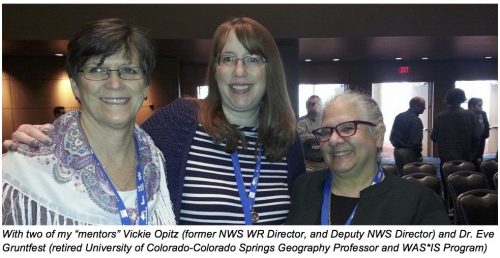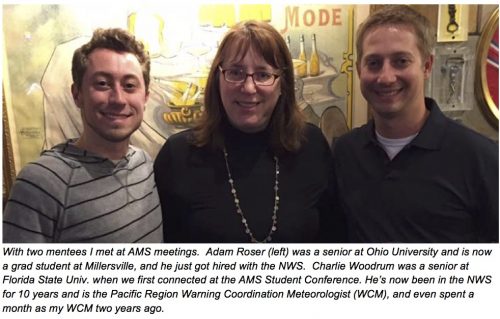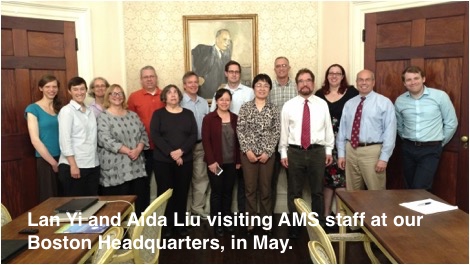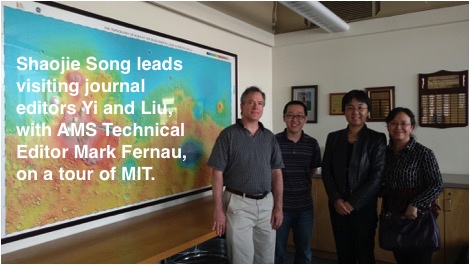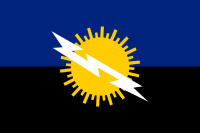In a “post-truth” world of contemporary politics and culture, “it’s easy to assume that science is really in trouble and everything is bad,” said Jane Lubchenco in her James R. Mahoney Memorial Lecture in Washington, D.C., last month.
In fact, science does have its image problems: most people don’t interact with science and don’t know scientists. A recent study showed that only 30% of Americans can even name one living scientist—and the most commonly cited name on that list last year, Stephen Hawking, no longer qualifies.
But the annual Mahoney lecture, hosted in part by AMS and NOAA, is now online, and you can see for yourself that even with a hard-hitting topic of “Science in a Post-Truth World,” Lubchenco was full of hope and practical advice about engagement, and ultimately about working toward a new paradigm of “embedding” scientists in society.
First of all, the vital signs of science are good. Public trust in scientific leaders has been stable for decades, even as it has plummeted for bankers and politicians. A majority believe science has been beneficial for society.
Lubchenco, a marine ecologist and now Distinguished University Professor at Oregon State University, has solid reason to think we can build on such durable trust. She has a history of commitment to communicating about science, as a former president of the American Association for the Advancement of Science and later as the NOAA Administrator. She’s been involved in efforts to help scientists communicate better—for example as a co-founder of COMPASS, a group that among other things provides a handy online workbook for scientists engaging the public.
In part Lubchenco argues for better understanding of the rift between scientists and the public. She cites inequities and “powerful vested interests promulgating a self-serving, anti-science agenda.” She also notes the decline of media business models that has led to citizens individually choosing their sources of information. Meanwhile, people also tune out scientists who seem to have ulterior motives, or are all “doom and gloom.”
Lubchenco says part of the solution is simply putting a real human face on science. The fact that people don’t know scientists means we have “an incredible opportunity. We need more scientists who are seen as scientists by the general public.”
Lubchenco argued that this doen’t mean every scientist is suited to being a celebrity or even a regular public messenger. Research shows that people are considered trustworthy when they are competent—but they also need to be “warm.” Teachers and nurses rated highly in both; professors and scientists rated highly in competence, but were seen as “cold.”
“Part of that is the way scientists are trained to talk to people,” said Lubchenco. It’s the downside of a facts-only, no-stories scientific culture. Lubchenco urges good analogies and metaphors and above all, making a connection with audiences. “Finding common ground and creating a shared value experience enables you to then pursue things that might be particularly contentious.”
While Lubchenco offered many tips on better communication—understanding audience, keeping messages simple, offering hope, showing value and successes—she went deeper, arguing that scientists need to be “physically and psychologically integrated” with society. She urged scientists to show who they are by working with society. One avenue is to enlist citizen scientists as well as a broader public in observing and other projects.
Lubchenco also wanted her audience to see beyond the dichotomy of applied and basic science—that we need more of the middle way of “use-inspired science” that has immediate relevance as well as prospects for advancing basic knowledge.
What are impediments? Science itself needs to reward its people who are good at outreach, Lubchenco said. They need training and recognition for it. They need to get involved, including running for political office. “I don’t think all scientists should be engaging… but they should all support their colleagues that do.”
There may already be progress in this direction, Lubchenco noted, moving first from an “ivory tower” model of science to a post-World War II “social contract” with the public, producing great benefits. “Now, I think we’re seeing another innovation from social contract to science embedded in and serving society—maybe.”
If people generally don’t know any living scientists, there’s one whose recent example can be an inspiration for Lubchenco’s vision of science more fully “embedded” in society: That would be the late Jim Mahoney, the NOAA Deputy Administrator, AMS president, and public health scientist whose memory this annual lecture honors. Said Lubchenco,
Science is indeed facing some major challenges. Maybe it’s not quite as bad as we thought, but we have unparalleled opportunities to serve society better and this is only going to happen if scientists take the bull by the horns and step up and make things happen.
I’d like to think we can do this in a way that is inspired by Jim’s example in confronting challenging times and figuring out how to navigate those. I would suggest that maybe if he were here, he would say, “It’s time for us to take back the narrative.” It’s time to write a new chapter in the relationship between science and society and for us collectively to have a quantum leap in relevance.”
